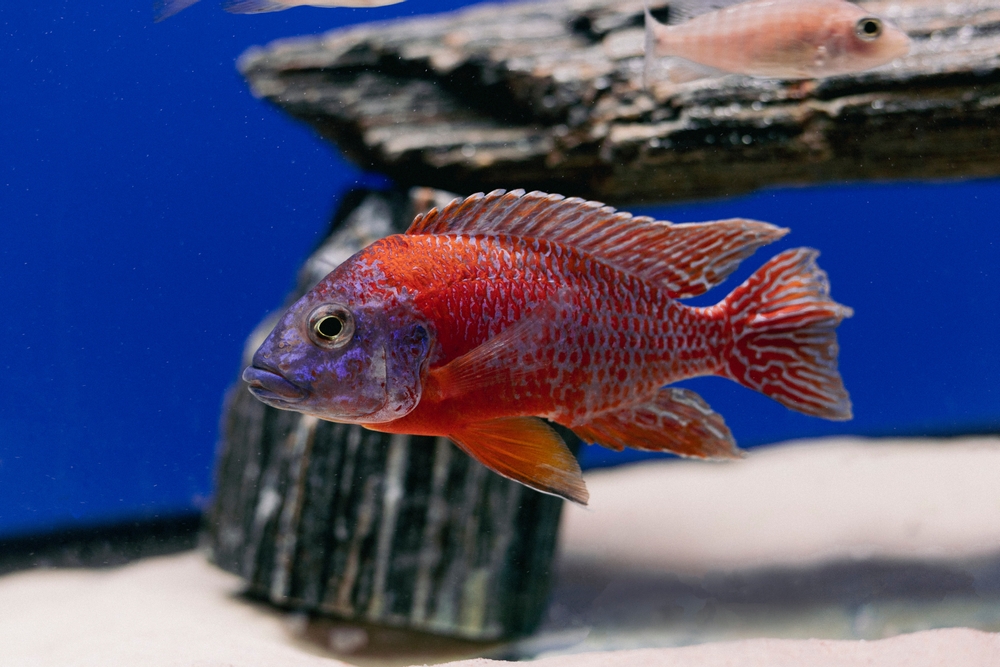African cichlids are a popular species of fish that are known for their vibrant colors and unique behaviors.
As with any pet, it’s important to understand their lifespan and care requirements to ensure they live a healthy and happy life. In this article, we’ll explore how long do African Cichlids live and provide tips for keeping them healthy in captivity.
Understanding African Cichlids is the first step in learning about their lifespan. These fish are native to African lakes and rivers and can vary greatly in size, color, and behavior. Some species are more aggressive than others, which can impact their lifespan in captivity.
Factors such as diet, water quality, and tank size can also affect their lifespan. In the following sections, we’ll dive deeper into these topics to provide a comprehensive guide to African cichlid care.
Contents
Key Takeaways on How Long Do African Cichlids Live?
- African cichlids are a diverse species of fish that require specific care to thrive in captivity.
- Factors such as diet, water quality, and tank size can impact their lifespan.
- Understanding their natural habitat and behavior is crucial for providing optimal care.
Understanding African Cichlids
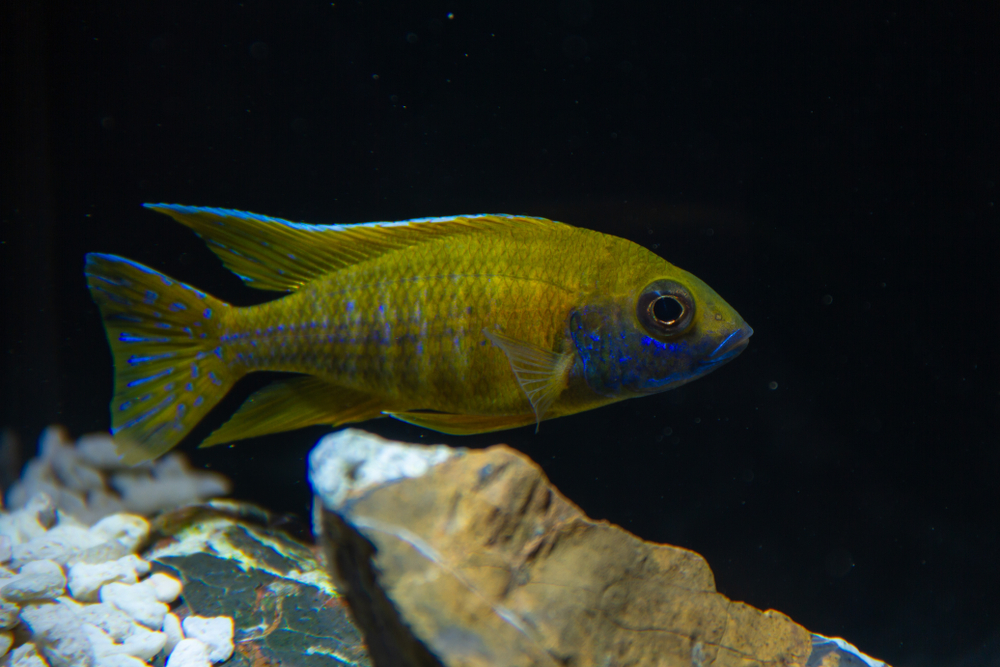
African cichlids are a diverse group of fish species that are native to the African Great Lakes and surrounding rivers. They are known for their vibrant coloration and unique behaviors.
African cichlids belong to the family Cichlidae, which includes over 1,500 species of fish found throughout the world. Cichlid species are often categorized into different genera based on their physical characteristics and geographic location.
Some of the most well-known African cichlid genera include Aulonocara, Labidochromis, and Pseudotropheus. Each genus contains multiple species, and within each species, there can be significant variation in appearance and behavior.
African cichlids are popular among aquarium enthusiasts because of their striking colors and active personalities. However, they can be challenging to care for due to their specific water and dietary requirements.
African cichlids are generally omnivorous and require a diet that includes both plant and animal matter.
In the wild, African cichlids can live for several years, with some species living up to 10 years or more. However, in captivity, their lifespan can be shorter due to factors such as water quality, diet, and stress.
Proper care and maintenance of the aquarium can help ensure that African cichlids live a long and healthy life.
Lifespan of African Cichlids
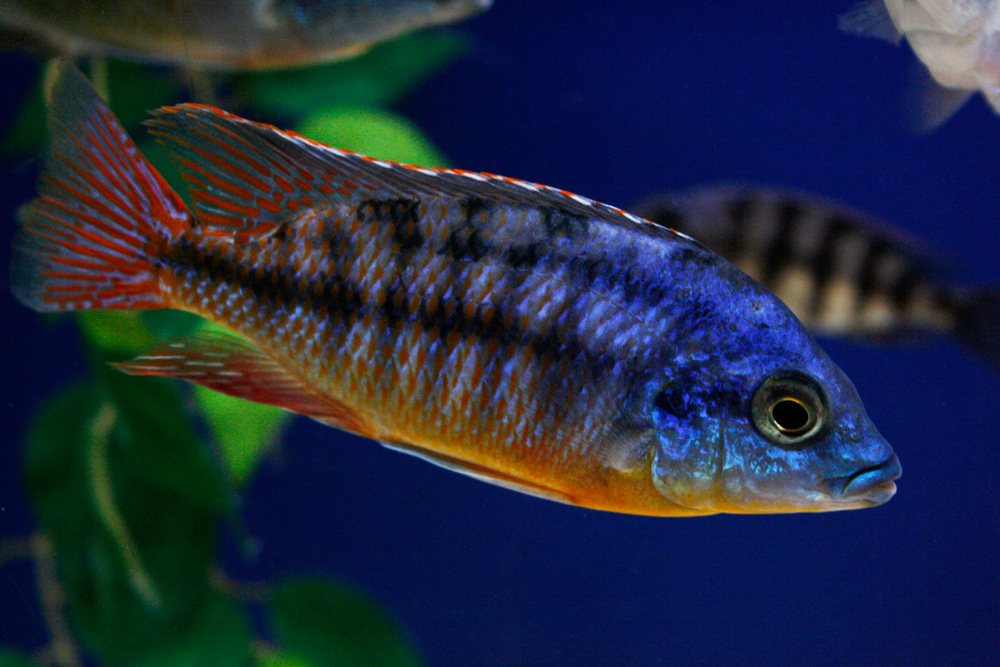
African cichlids are known for their vibrant colors and unique personalities. They are a popular choice among aquarium enthusiasts due to their hardiness and adaptability. One important factor to consider when keeping African cichlids is their lifespan.
On average, African cichlids can live for 5-10 years in captivity. However, with proper care and a healthy environment, some species can live up to 15 years or more. Factors that can affect their lifespan include genetics, diet, water quality, and stress levels.
It is important to note that the lifespan of African cichlids can vary greatly depending on the species. For example, some species of Lake Malawi cichlids have been known to live up to 20 years in captivity, while some species of Lake Victoria cichlids may only live for 2-3 years.
To ensure a long and healthy life for African cichlids, it is important to provide them with a balanced diet, clean water, and a suitable environment.
Regular water changes, proper filtration, and maintaining appropriate water parameters can help to reduce stress and promote longevity.
Habitat and Environment
African cichlids are freshwater fish that inhabit the lakes and rivers of Africa. They are found in three of the major lakes in Africa: Lake Tanganyika, Lake Malawi, and Lake Victoria.
These lakes are home to a diverse range of species, and African cichlids are one of the most popular among them.
In the wild, African cichlids live in a variety of environments, including rocky and sandy bottoms, and they can be found at different depths depending on the species. Some species prefer shallow waters, while others can be found at depths of up to 100 meters.
Lake Tanganyika is the second deepest lake in the world and is home to over 200 species of cichlids. The lake is known for its clear waters and rocky shorelines, which provide the perfect habitat for cichlids.
Lake Malawi is another popular habitat for cichlids, with over 800 species living in its waters. The lake is known for its sandy and rocky bottoms and is home to some of the most colorful cichlids in the world.
African cichlids are also found in rivers and other freshwater lakes throughout Africa. They are adaptable to a variety of environments and can thrive in both still and flowing waters.
The water conditions in their natural habitats can vary greatly, but African cichlids generally prefer water with a pH between 7.5 and 8.5 and a temperature between 75 and 82 degrees Fahrenheit.
African Cichlids in Captivity
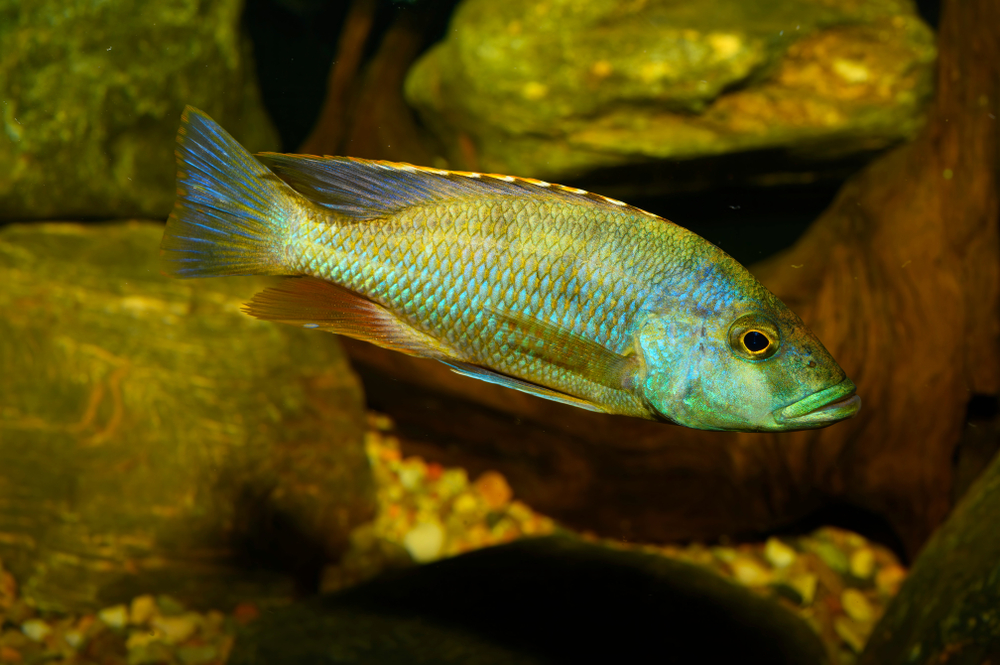
African cichlids are a popular choice for pet owners who keep aquariums at home. These fish are known for their vibrant colors and active personalities. When properly cared for, African cichlids can live for many years in captivity.
In order to keep African cichlids healthy and happy, it is important to provide them with a suitable aquarium environment. This means setting up a tank that is large enough to accommodate their size and swimming habits.
It is also important to provide adequate filtration and regular water changes to maintain water quality.
African cichlids are often kept in community tanks with other fish. However, it is important to choose tank mates carefully to avoid aggression and territorial disputes.
It is recommended to keep African cichlids with other cichlid species or other fish that are similar in size and temperament.
In terms of diet, African cichlids are omnivores and will eat a variety of foods. It is important to provide a balanced diet that includes both plant and animal matter. Commercially available cichlid pellets are a convenient and nutritious option.
Size and Appearance
African cichlids are known for their vibrant colors and unique patterns. They are a popular fish species among aquarium enthusiasts due to their striking appearance. These fish come in a variety of sizes, ranging from small to large.
The size of African cichlids varies depending on the species. On average, they can grow to be between 3 to 8 inches in length, but some species can grow up to 12 inches. The males are usually larger than the females and have more pronounced fins.
The colors and patterns of African cichlids are diverse, with some species exhibiting bright, bold colors while others are more muted. The colors can range from blues, yellows, oranges, reds, and greens.
Some species have multiple colors and patterns, making them even more visually appealing.
In addition to their colors, African cichlids have unique characteristics that set them apart from other fish species. They have a protruding lower jaw and sharp teeth that they use to catch and eat their prey.
They are also known for their aggressive behavior, especially towards other fish of the same species.
Diet and Feeding
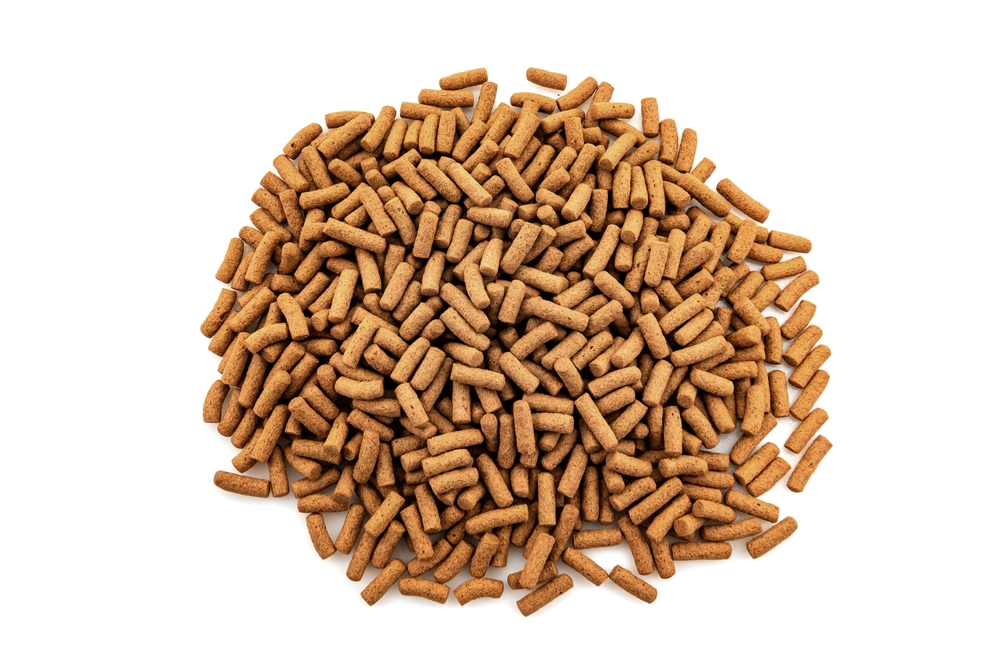
African cichlids are known to have a diverse diet, depending on their species and habitat. In general, they are considered omnivores, but some species can be classified as either herbivores or carnivores.
Their diet should include a variety of foods to ensure they receive the necessary nutrients and nourishment. Commercially available pellets and flakes are a popular choice for feeding African cichlids as they contain a balanced mix of protein, vitamins, and minerals.
Carnivorous species require a diet that is high in protein and can include live or frozen foods such as brine shrimp, krill, and insects. Herbivorous species, on the other hand, require a diet that is high in plant matter and can include algae, spirulina, and vegetable matter.
It is important to note that overfeeding can lead to health problems such as obesity and swim bladder issues. African cichlids should be fed small amounts multiple times a day rather than one large feeding to prevent these issues.
In summary, African cichlids have a diverse diet that should include a variety of foods to ensure they receive the necessary nutrients and nourishment.
Commercially available pellets and flakes are a popular choice, but live or frozen foods can also be included in the diet for carnivorous species. Herbivorous species require a diet that is high in plant matter. It is important to avoid overfeeding to prevent health problems.
Behavior and Temperament
African cichlids are known for their diverse and active behavior. They are territorial fish and can become aggressive towards other fish in their tank.
This aggression is most often seen during breeding and feeding times, and it is important to provide ample space for the fish to establish their territories.
It is important to note that not all African cichlids are aggressive. Some species are peaceful and can be kept with other non-aggressive fish. However, it is important to research the specific species of African cichlid before adding them to a community tank.
In general, African cichlids are active swimmers and require plenty of swimming space in their tank. They also enjoy having hiding spots and areas to explore. Providing these elements in their tank can help keep them stimulated and reduce any aggressive behavior.
Health and Care

African cichlids are generally hardy and easy to care for, but proper health and care are still essential to ensure they live a long and healthy life. Here are some tips for keeping your African cichlids healthy and happy:
1. Care
It is important to provide a suitable environment for your African cichlids. They require a spacious aquarium with plenty of hiding places and swimming space. The aquarium should also have a good filtration system to maintain water quality.
2. Health
Stress can lead to health problems in African cichlids. To reduce stress, it is important to maintain a stable environment with consistent water temperature and quality. It is also important to avoid overcrowding and to provide a balanced diet.
3. Maintenance
Regular maintenance is necessary to keep your African cichlids healthy. This includes monitoring water temperature, pH, and other water parameters, as well as performing regular water changes to maintain water quality.
4. Water Temperature
African cichlids prefer a water temperature between 75-80°F. Sudden changes in water temperature can cause stress and health problems, so it is important to maintain a stable temperature.
5. Water Quality
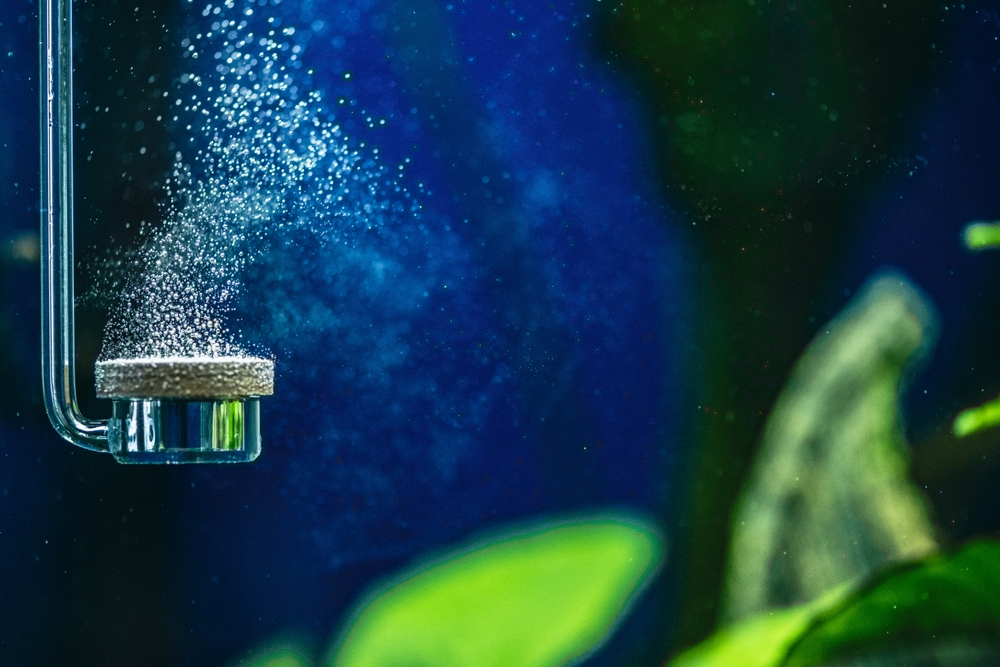
African cichlids require clean, well-oxygenated water. Regular water changes, proper filtration, and monitoring of water parameters such as ammonia and nitrate are essential to maintain water quality.
Breeding African Cichlids
Breeding African cichlids can be a rewarding experience for fish keepers. However, it requires careful planning and preparation to ensure the success of the breeding process. Here are some important factors to consider when breeding African cichlids:
Tank Setup
The breeding tank should be set up in a way that mimics the natural habitat of African cichlids. This includes providing plenty of hiding places, rocks, and sand substrate. The tank should also have a good filtration system to maintain water quality.
Pairing

It is important to pair the right male and female African cichlids for breeding. This can be done by observing their behavior and selecting a male and female that show interest in each other. It is also important to ensure that the male and female are of the same species.
Spawning
African cichlids are known to be egg layers. The female will lay eggs on a flat surface, and the male will fertilize them. It is important to provide a suitable spawning site, such as a flat rock or slate.
The eggs should hatch within a few days, and the fry will become free-swimming after a week.
Feeding
Once the fry are free-swimming, they will need to be fed small amounts of food several times a day. This can include small amounts of brine shrimp, crushed flakes, or other suitable food.
Specific African Cichlid Species

African cichlids are a diverse group of fish that come in a variety of colors, shapes, and sizes. Some of the most popular African cichlid species include peacock cichlids, kenyi cichlids, and mbuna.
Peacock cichlids are known for their bright and vibrant colors, which can range from blues and greens to yellows and oranges. These fish are also relatively peaceful and can be kept with other non-aggressive cichlid species.
Kenyi cichlids, on the other hand, are more aggressive and territorial. These fish are known for their bright yellow coloration and black stripes, which can make them a striking addition to any aquarium.
However, they should be kept with other aggressive cichlid species or in a species-only tank.
Mbuna cichlids are another popular African cichlid species. These fish are known for their unique color patterns and are often kept in groups. However, they can be aggressive and territorial, so it is important to provide plenty of hiding spots and territory in the aquarium.
Other popular African cichlid species include angelfish, electric blue hap, electric yellow, lionhead, tetras, blue dolphin, daffodil cichlid, emperor cichlid, kribensis, butterfly, buffalo head, jewel, and daffodil.
Each of these species has its own unique characteristics and requirements, so it is important to do research before adding them to an aquarium.
Tank Mates and Community
When it comes to African cichlids, choosing the right tank mates is crucial for the health and well-being of your fish.
African cichlids can be aggressive towards other fish, especially those that are smaller or have a similar body shape. Therefore, it is important to choose tank mates that can coexist peacefully with your African cichlids.
Some good tank mates for African cichlids include other African cichlids, as well as larger fish such as catfish and plecos. It is important to ensure that the tank is large enough to accommodate all of the fish, as African cichlids require a lot of swimming space.
A good rule of thumb is to have a minimum of 55 gallons for a community tank with African cichlids.
Beginners should avoid mixing African cichlids with South American cichlids, as they have different water requirements and can become aggressive towards each other.
Additionally, it is important to avoid overcrowding the tank, as this can lead to stress and aggression among the fish.
In a community tank, it is important to provide plenty of hiding places and territories for each fish. This can be achieved through the use of rocks, caves, and plants. Providing a variety of hiding places can help reduce aggression and territorial disputes among the fish.
Plants and Substrate

African cichlids are known to be aggressive fish that can uproot plants and disturb the substrate. Therefore, it is important to choose the right type of plants and substrate for your aquarium.
When it comes to plants, it is recommended to choose hardy, fast-growing species that can withstand the cichlids’ digging and rooting behavior.
Some good options include Anubias, Java Fern, and Vallisneria. These plants can be attached to rocks or driftwood to prevent them from being uprooted.
In terms of substrate, it is best to choose a fine sand or gravel that is not too deep. This will prevent the cichlids from digging too much and disturbing the plants. It is also important to avoid sharp or jagged materials that can harm the fish.
Frequently Asked Questions
What is the average lifespan of African cichlids?
The average lifespan of African cichlids is around 8-10 years in the wild. However, in captivity, they can live up to 15 years or more with proper care.
How long can African cichlids live in captivity?
African cichlids can live up to 15 years or more in captivity if they are provided with a suitable environment and proper care.
What is the longest living African cichlid recorded?
The longest living African cichlid recorded was a Frontosa cichlid that lived for 25 years in captivity.
Do African cichlids recognize their owners?
African cichlids do not have the ability to recognize their owners. However, they can become accustomed to their caretaker’s presence and may show signs of recognition.
What factors affect the lifespan of African cichlids?
The lifespan of African cichlids can be affected by various factors such as water quality, diet, tank size, and genetics. Providing a suitable environment and proper care can help increase their lifespan.
What are some common tank mates for African cichlids?
Some common tank mates for African cichlids include other cichlids of similar size and temperament, catfish, and loaches. It is important to research and choose compatible tank mates to avoid aggression and territorial disputes.

Ian Sterling, founder of Fishlab.com, began his aquarium journey over 30 years ago, driven by a deep fascination for fish and their diverse personalities. His website, Fishlab.com, is dedicated to making fishkeeping accessible and enjoyable, offering beginner-friendly guidance, expert insights, and a community for aquarists to connect and share experiences.


